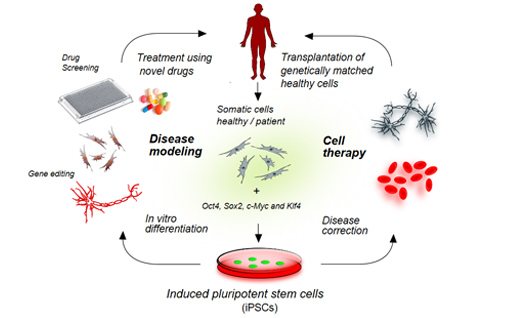Induced pluripotent stem cells (iPSCs) are similar to embryonic stem cells because they can self-renew and are capable of pluripotency (differentiating into various cell types). iPSCs can be obtained from terminally differentiated cells taken from patients with genetic diseases. They can also be used for cell based genetic or drug screens, which would be difficult in primary human cell lines or mouse models. More recently, iPSCs have been generated for many haematological diseases such as Fanconi’s anaemia, a rare bone marrow failure disease. There are several drawbacks associated with deriving iPSCs directly from patients for disease modelling. The hiPSC lines generated would have significant phenotypic and genetic differences. A number of studies have shown that iPSCs seem to vary greatly in their genomic methylation pattern, in some cases they retain epigenetic ‘memory’ of their somatic cell of origin from which they were reprogrammed. Generation of disease specific iPSCs involves precise identification of phenotypes which requires rigorous testing that involves comprehensive genetic diagnoses and functional analyses of defective genes. With the advent of gene editing technologies such as ZFN, TALENS and CRISPR/Cas9 they have shown to be promising tools to generate isogenic cell lines. Mutant (knock out) isogenic iPSC lines have the same genetic background as their wild type counterparts and offer valuable resources to study the functionality of diseased genes and their underlying mechanisms. In this component we are focussing our efforts on generating mutant iPSC lines from wild type iPSC lines by using the CRISPR/Cas9 technology to create pre-clinical models of Diamond-Blackfan Anaemia (DBA) and congenital dyserythropoietic anaemias (CDA).The CD34+HSCs derived from the mutant hiPSCs will be transduced with the wild type gene to evaluate the efficacy of lentiviral vectors in gene therapy for CDA.So far, establishing feeder free culture of iPSCs and effective transfection of guide RNAs (gRNAs) and Cas 9 gene for gene editing along with a robust protocol for the differentiation of iPSCs to haematopoietic progenitor cells (HSPCs) have been standardized.

Figure: Schematic illustration for the generation of induced pluripotent stem cells and its applications

